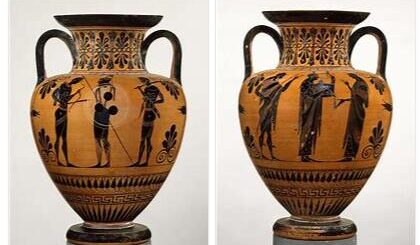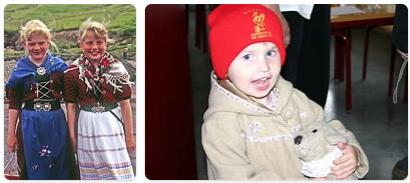Attractions in Wales
With Wales you encounter a piece of the United Kingdom… and in a certain way – especially historically – to England, which borders on the west. In addition, Wales borders on the Irish Sea, the St. George’s and the Bristol Channel – which results in a coastline of approx. 1,200 km, which is partly made up of imposing cliffs and partly of expansive beaches. The beaches on The Gower peninsula are particularly recommended. The landscape of Wales is also shaped by the Cambrian Mountains in the interior of the island, lake landscapes, moors and huge parks. Overall, the nature of the country can be aptly described as being made for long hikes – thanks to an extensive network of paths, also for cycling tours. The three national parks are also good opportunities to explore the landscape: Pembrokeshire Coast in the southwestern part of the country, the hilly Brecon Beacons National Park north of Cardiff and the well-known Snowdonia National Park in the northwest. On the way you will come across picturesque little places again and again. But also of medieval castles, which you can find almost everywhere in the country and with which a tour of discovery through nature is parallel to a tour of cultural discovery. But Wales also has other historical buildings or testimonies to offer, as well as old sacred buildings. Recommended for those interested in culture are Pentre Ifan with Neolithic tombs, the amphitheater in Caerleon from the 2nd century, the ruins of Tintern Abbey in Wye Valley or St. David’s Cathedral from the 12th century.
Bodnant Garden and Bodysgallen Hall
In the north of Wales, County Conwy extends to the coast of the Irish Sea. In summer, bathers come to the beach in the coastal town of Llandudno, and the hilly hinterland is great for hiking. Tourists interested in British gardens (maybe even hobby gardeners themselves) should visit the wonderful Bodnant Garden by the village of Tal-y-Cafn in County Conwy. The Hotel Bodysgallen Hall near Llandudno is recommended to all fans of the British way of life who would like to spend the night in a historic mansion on their trip.
The Bodnant Garden park
The park was founded in 1874. It has been in the family for a long time and is administered by the National Trust. Undoubtedly, Bodnant Garden is one of the most beautiful and varied botanical gardens in all of Great Britain! The park consists of an upper and a lower garden. The upper garden is laid out in Mediterranean style on five terraces. Many Mediterranean plants thrive in the mild climate of Wales – visitors can see this for themselves in the upper garden. Herb beds are also laid out here. The lower garden is called “The Dell” and is crossed by a small river called Hiraethlyn. A waterfall is a particularly romantic sight. In the lower garden there are numerous trees such as cedars and Douglas firs. The park is worth seeing in every season (and it is open every day except at Christmas): daffodils bloom in spring, magnolias and rhododendrons in summer. If you want, you can take a guided tour through the park. There are benches under pergolas to relax, and visitors can also take a break in the two restaurants and two tea pavilions.
The Hotel Bodysgallen Hall
The Bodysgallen Hall mansion also has a lovely 80 hectare park. The house, built in the 17th century, is now a four-star hotel. Guests can choose from 22 luxurious rooms and small holiday homes (cottages). The gourmet restaurant “The Dining Room” and the “Bistro 1620” take care of the physical well-being. In the evenings, guests like to meet in the hotel’s bar or library. The Bodysgallen Hall spa area offers relaxation in the pool and has a whirlpool, sauna and steam bath. Beauty treatments can be booked.
Caernarfon Castle
Caernarfon Castle is one of the most famous castles in Wales. The impressive medieval fortress, which is located in the city of Gwynedd in the north-west of the country, directly on the famous Menai Strait, is a UNESCO World Heritage Site. The castle, which is still well preserved today and towers over the small town of Caernarfon, was built at the end of the 13th century on the initiative of the English King Edward I. For him, Caernarfon Castle was not only an important military fortress to protect the Welsh coasts, but above all a great prestige object. After completion, the castle also served as the seat of government.
Impressive facade, magnificent halls
The more than 160 meter long Caernarfon Castle still impresses with its 16 meter high massive walls made of different colored limestone and sandstones, which are already visible from afar. The castle has a total of nine octagonal towers of various sizes. The major safety precautions are still visible today. The main gate was not only secured by six portcullis but also by a drawbridge. The interior of the castle was equipped with a lot of comfort. In addition to huge, splendid halls, modern bathrooms with running water and toilets were installed here, and these can still be viewed today. In the grounds of the castle, Prince Charles was crowned Prince of Wales in 1969.
International Musical Eisteddfodd
One week in early July
Every year in the second week of July, visitors from all over the world flock to the rural, idyllic community of Llangollen. Llangollen is located in north-east Wales on the River Dee and has only about 3,700 inhabitants. But when the big Festival International Musical Eisteddfodd takes place in early July, every hotel bed in the communities and in the villages and towns of the area is occupied! Music lovers like to take a trip to Wales, because singing and dancing are the order of the day.
On the history of the festival
The International Musical Eisteddfodd (“Eisteddfodd” is the Welsh word for “festival”) first took place in 1947. The idea for this came from the British civil servant Harold Tudor, who during the war looked after and attended concerts with European politicians who were living in exile in Great Britain. These concert visits gave him the idea that music could help to overcome the trauma of war. In 1947 singers (choirs and soloists) came to Llangollen for the first time to hold a music competition. The choir competition was won by two foreign ensembles, the victorious female choir came from Portugal, the best male choir from Hungary. Folk dances were also performed at the first festival, but not yet competitively. Gradually, the International Musical Eisteddfodd gained international fame, the competitions were expanded, and the number of visitors and participants grew steadily. Recently, at least 5,000 singers and dancers compete in the competitions.
Music and dance
Singing and dancing competitions are held daily during the festival week. Choirs, dance groups, soloists, small ensembles – everything is represented. A concert is given every evening. Celebrities like Luciano Pavarotti, Nigel Kennedy, Joan Baez, José Carreras, Montserrat Caballé have performed in Llangollen! The first day of the festival week is celebrated as “Children’s Day”. Numerous students from the area then come to the concerts. There is always a big gala concert on the last day. There is a wide variety of musical styles in Llangollen, but overall, classical music and folk dances dominate.
The pageant
A special crowd puller is the pageant, which is always held on Tuesdays during the festival. Music groups then pass through Llangollen, and visitors crowd along the roadside.



